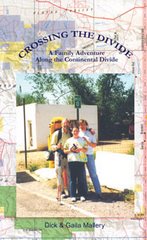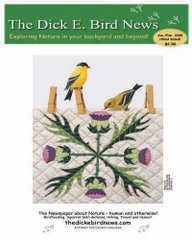
Descendants of the same horses that carried soldiers, prospectors, Plains Indians and Spanish conquistadors are now deployed by the federal government to help patrol the most rugged reaches of the northern border.
When I finished the CDT in the fall of 1999 there was not a lot of border patrol activity on the northern border with Canada as there seemed to be on the southern border with Mexico. Hiking across the bootheel of New Mexico and north to Silver City the border patrol fly low overhead three or four times to check me out. Finishing the trek my concern was that the Canadian border patrol might take my forty-five dollar canister of bear spray. They did confiscate our mace coming out of Alaska. We had it on a shelf in our trailer. Customs came in and said we had to "abandon it to the Crown." I didn’t want to abandon my bear spray to the Crown so I stuffed it in the bottom of my pack at Goat Haunt for the last nine miles to Waterton. My wife brought the boat down the lake from Waterton to meet me at Goat Haunt and hike the last nine miles and cross the border with me. An hour up the trail we noticed a big, fresh, steamy pile of berry flavored bear scat in the trail. My wife said, "Where is your bear spray?" I said, "I have it hidden in my pack." She just shook her head. We didn’t see bears or border patrol. That has all changed since 9/11. Starting or finishing your CDT adventure today you can expect to see a presence at the borderAstride sturdy mustangs named "Okanogan" and "Spurs," U.S. Border Patrol agents Darrel Williams and Justin Hefker ride quietly along a trail in Montana’s Glacier National Park along the Continental Divide.The mustangs are among a dozen the Border Patrol’s Spokane Sector has bought to patrol a 308-mile-long section of the U.S.-Canadian border from the crest of the Cascade Range in Washington state to the Continental Divide in Montana."The reason we went with the horses was to get into those hard-to-reach areas," said the patrol’s assistant chief of the region, Agent Lee Pinkerton. "We can really reach out to some of these remote locations."The Border Patrol, a division of the Department of Homeland Security’s Customs and Border Protection, routinely uses horses on the southern border with Mexico. But the mustangs owned by the patrol’s Spokane Sector are the first to watch the northern border, said Pinkerton.The Border Patrol’s "Operation Noble Mustang" adopts horses from the U.S. Bureau of Land Management’s wild horse and burro program, blending today’s technology with yesterday’s law enforcement traditions, the agency said.The breed’s big bones and large hoofs give them a sure-footedness that makes them a perfect fit for scaling the steep hillsides and thick forests along the border, Graham said. They also have less of an impact on the fragile wilderness ground than motorized vehicles, he said."These horses are truly American. They are a product that’s unique to the United States and we are putting them in a position to help us protect the U.S.," Pinkerton said. "There’s something inherently right in doing that."The mustangs were rounded up in the BLM wild horse adoption program, broken by inmate wranglers at a Colorado prison, then sent to the Border Patrol’s Colville station in Washington state for final training.Along the Spokane sector, agents also patrol the smaller Salmo-Priest wilderness of northeastern Washington state, as well as Montana’s Glacier National Park, where it abuts Canada’s Waterton Lakes National Park.Graham’s station has four mustangs, as well as three mules and a handful of horses leased from local ranches for use on their patrols. Others are assigned to stations in Metaline Falls and Curlew in Washington state, as well as Whitefish, Mont.Law enforcement aircraft have limited use in the wild, Pinkerton said. It is difficult to see people hiding beneath the tree canopy and wilderness laws limit how low aircraft can fly, he said.
"We’re going back to the 1800s style of doing this because it is successful," he said. "On the ground, a horse is going to be the best mode of transportation in those areas."
FOR MORE CDT INFO:
http://www.thenewspaperthatwalks.com/
When I finished the CDT in the fall of 1999 there was not a lot of border patrol activity on the northern border with Canada as there seemed to be on the southern border with Mexico. Hiking across the bootheel of New Mexico and north to Silver City the border patrol fly low overhead three or four times to check me out. Finishing the trek my concern was that the Canadian border patrol might take my forty-five dollar canister of bear spray. They did confiscate our mace coming out of Alaska. We had it on a shelf in our trailer. Customs came in and said we had to "abandon it to the Crown." I didn’t want to abandon my bear spray to the Crown so I stuffed it in the bottom of my pack at Goat Haunt for the last nine miles to Waterton. My wife brought the boat down the lake from Waterton to meet me at Goat Haunt and hike the last nine miles and cross the border with me. An hour up the trail we noticed a big, fresh, steamy pile of berry flavored bear scat in the trail. My wife said, "Where is your bear spray?" I said, "I have it hidden in my pack." She just shook her head. We didn’t see bears or border patrol. That has all changed since 9/11. Starting or finishing your CDT adventure today you can expect to see a presence at the borderAstride sturdy mustangs named "Okanogan" and "Spurs," U.S. Border Patrol agents Darrel Williams and Justin Hefker ride quietly along a trail in Montana’s Glacier National Park along the Continental Divide.The mustangs are among a dozen the Border Patrol’s Spokane Sector has bought to patrol a 308-mile-long section of the U.S.-Canadian border from the crest of the Cascade Range in Washington state to the Continental Divide in Montana."The reason we went with the horses was to get into those hard-to-reach areas," said the patrol’s assistant chief of the region, Agent Lee Pinkerton. "We can really reach out to some of these remote locations."The Border Patrol, a division of the Department of Homeland Security’s Customs and Border Protection, routinely uses horses on the southern border with Mexico. But the mustangs owned by the patrol’s Spokane Sector are the first to watch the northern border, said Pinkerton.The Border Patrol’s "Operation Noble Mustang" adopts horses from the U.S. Bureau of Land Management’s wild horse and burro program, blending today’s technology with yesterday’s law enforcement traditions, the agency said.The breed’s big bones and large hoofs give them a sure-footedness that makes them a perfect fit for scaling the steep hillsides and thick forests along the border, Graham said. They also have less of an impact on the fragile wilderness ground than motorized vehicles, he said."These horses are truly American. They are a product that’s unique to the United States and we are putting them in a position to help us protect the U.S.," Pinkerton said. "There’s something inherently right in doing that."The mustangs were rounded up in the BLM wild horse adoption program, broken by inmate wranglers at a Colorado prison, then sent to the Border Patrol’s Colville station in Washington state for final training.Along the Spokane sector, agents also patrol the smaller Salmo-Priest wilderness of northeastern Washington state, as well as Montana’s Glacier National Park, where it abuts Canada’s Waterton Lakes National Park.Graham’s station has four mustangs, as well as three mules and a handful of horses leased from local ranches for use on their patrols. Others are assigned to stations in Metaline Falls and Curlew in Washington state, as well as Whitefish, Mont.Law enforcement aircraft have limited use in the wild, Pinkerton said. It is difficult to see people hiding beneath the tree canopy and wilderness laws limit how low aircraft can fly, he said.
"We’re going back to the 1800s style of doing this because it is successful," he said. "On the ground, a horse is going to be the best mode of transportation in those areas."
FOR MORE CDT INFO:
http://www.thenewspaperthatwalks.com/












No comments:
Post a Comment